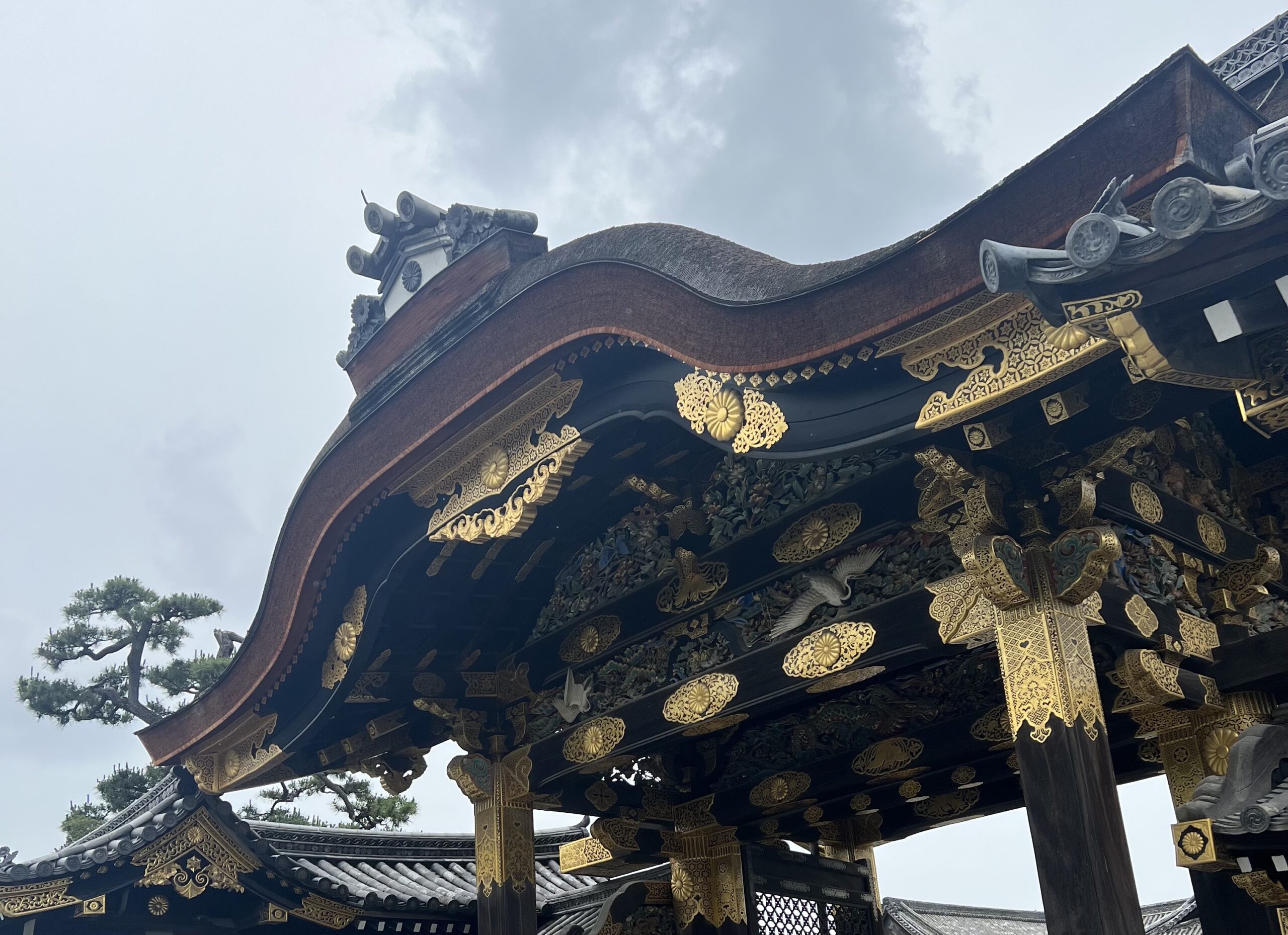
Chinese-style Karamon Gate that guards the Nijo Castle
Among the many Japanese historical relics, Nijo Castle is a beautiful building with a deep history in the heart of Kyoto.
Built in 1603, this flatland castle has been carefully preserved for millenia and, therefore, has an abundance of stories to tell. First-time travelers should not miss an opportunity to visit this magical site.
Nijo Castle was originally built for Tokugawa leyasu, the first shogun of the Edo period, which lasted from 1603 to 1867. After the shogunate fell, the imperial palace was donated to Kyoto and later opened publicly as a historical site.
Though it originally consisted of two palaces, only one exists today because of fires: the Ninomaru Palace. All that’s left of the other palace, Honmaru Palace, is a garden and the foundation of the former castle. Today, any visitor can buy a ticket and see the grounds surrounding the castle as well as go inside of it. However, Honmaru is only open to the public on special occasions.
Nijo Castle was built to protect the shogun and his family while keeping assailants out. The first thing one sees when arriving at the site is the massive Karamon Gate – a karamon gate, which translates to “Chinese gate,” is a type of gate found in Japanese architecture. Adorned with ornate Japanese designs and golden details, this is a popular place for photos. It’s also where today’s visitors can purchase tickets for entry.
Past this is a Chinese-style gate that signifies the entrance to the Ninomaru, which translates to the second circle of defense. The Ninomaru was built to protect Nijo Castle and those inside of it.
The walls of the castle are covered with beautiful paintings on panels; although these paintings are replicas, you can see the original versions of these works in the onsite museum. Beside each panel is a thorough description of what is depicted in each piece and what it represents. Aligning with Japanese culture and religion, an emphasis on nature is present in a majority of these panels.
One of the rooms is dedicated to tigers. First-time visitors might be confused by the way these tigers are depicted. This is because tigers did not exist in Japan at the time. Artists only had tiger hides and oral descriptions of the tigers to create the paintings.
When walking through the corridors of the castle, it is impossible to miss the sound of the creaking floors. This is not an error in design, but, rather, an intentional construction choice for those living in the castle to hear intruders. Deemed “nightingale corridors,” the floorboards distinctly creak as visitors (or intruders!) walk over them; the sound mimics birdsong, thus, the name. The unique creaking as people walk the floors makes for an all-encompassing sensory experience.
Although guests can walk through the nightingale corridors surrounding the rooms, no one is allowed entry into the rooms themselves. These were deemed sacred and only to be used by the highest officials invited by the shogun. In some of the rooms is a raised platform, where the shogun would sit. In some rooms, life-sized dioramas depicting the shogun and officials paying their respects demonstrate what the room would have looked like when in use.
Many would agree that spring and fall are the best times to visit Japan, due to the cherry blossom season and the changing colors of the maple trees in the fall. Nijo Castle is no exception to this advice. There are 400 cherry blossom trees on site, and in spring, the grounds explode into a sea of pink and white.
The grounds also hold a large variety of maple and gingko trees that turn in the fall. There is also a plum orchard that blooms from late February to early March. However, the grounds are still lush in early summer as well. Like many other historical sites, Nijo Castle is surrounded by green and trees line the walkways. The water features are surrounded by beautiful flowers that are in full bloom in June.
While visitors can snap photos of all the greenery, photography is not allowed inside the castle, so guests should be sure to take the time to thoroughly immerse themselves in the experience, and take in the historical paintings. Shoes also are forbidden in the castle, so be prepared to stow them in a cubby just outside the entrance.
For only 800 JPY (and an additional 500 JPY to enter Ninomaru Palace), visitors will be fully enveloped in the rich history of Japan while surrounded by beautiful flora and fauna. Nijo Castle is one of the last remaining palaces of the shogunate and is truly a site visitors to Japan will not want to miss.







